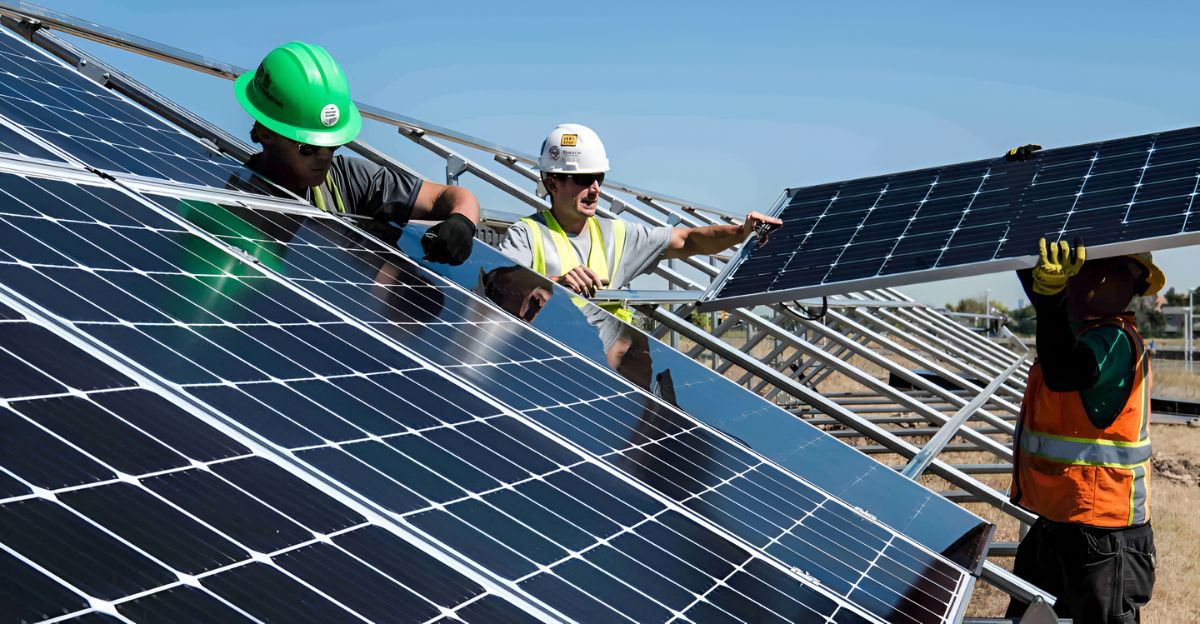
An example of how significant, arid lands can be repurposed to fight climate change is the installation of 1.4 million solar panels in a U.S. desert, which represents a turning point in the deployment of renewable energy. This project, which is situated in arid areas like Riverside County, California, and the Buckeye State, Ohio, represents a calculated move away from fossil fuels and toward clean energy by using the plentiful sunshine to produce enormous amounts of electricity.
This initiative positions deserts as essential contributors to national energy security, signaling a broader cultural and economic shift beyond energy production. It also emphasizes how urgent it is to develop sustainable, scalable solutions to combat climate change.
From the Birthplace of Aviation to the Solar Pioneer
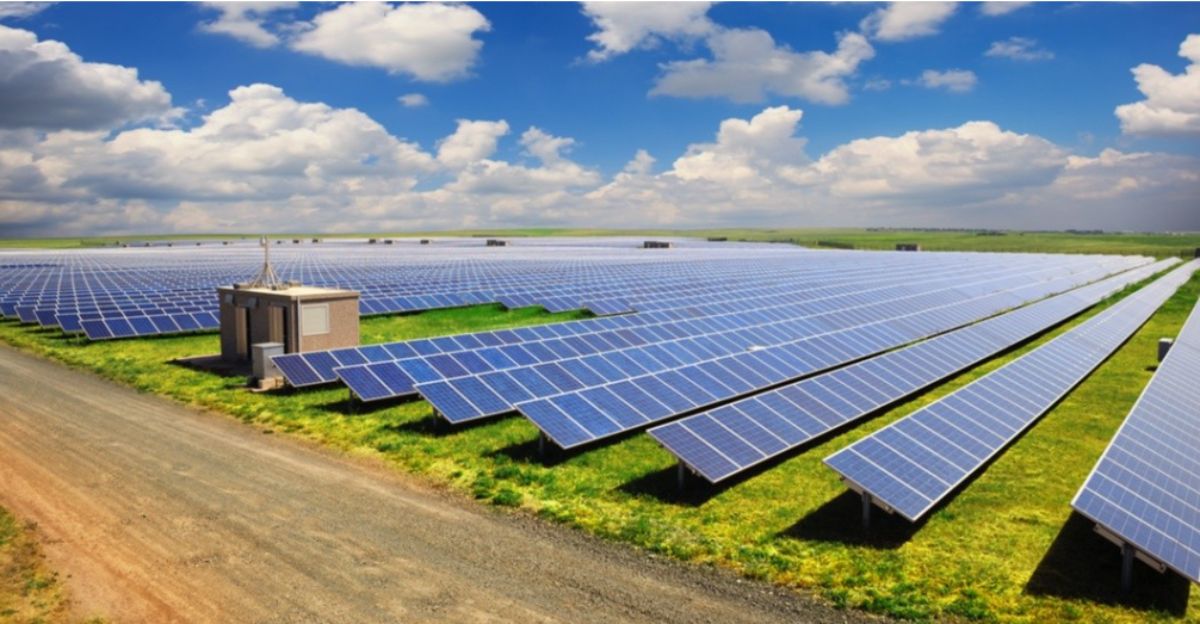
With initiatives like the Union Solar Farm and Fox Squirrel Solar, Ohio, once referred to as the “birthplace of aviation” and home to iconic sites like the Rock and Roll Hall of Fame, is now leading the way in solar energy. These farms represent a shift from industrial legacy to sustainable innovation by supplying clean electricity to the Ohio and PJM grids.
The change in Ohio is representative of the Rust Belt’s overall economic development, where green technologies are replacing dwindling manufacturing sectors. In addition to boosting local economies, this change promotes environmental justice by lowering pollution in formerly industrialized areas.
The Size and Effects of Solar Farms in Arid Regions
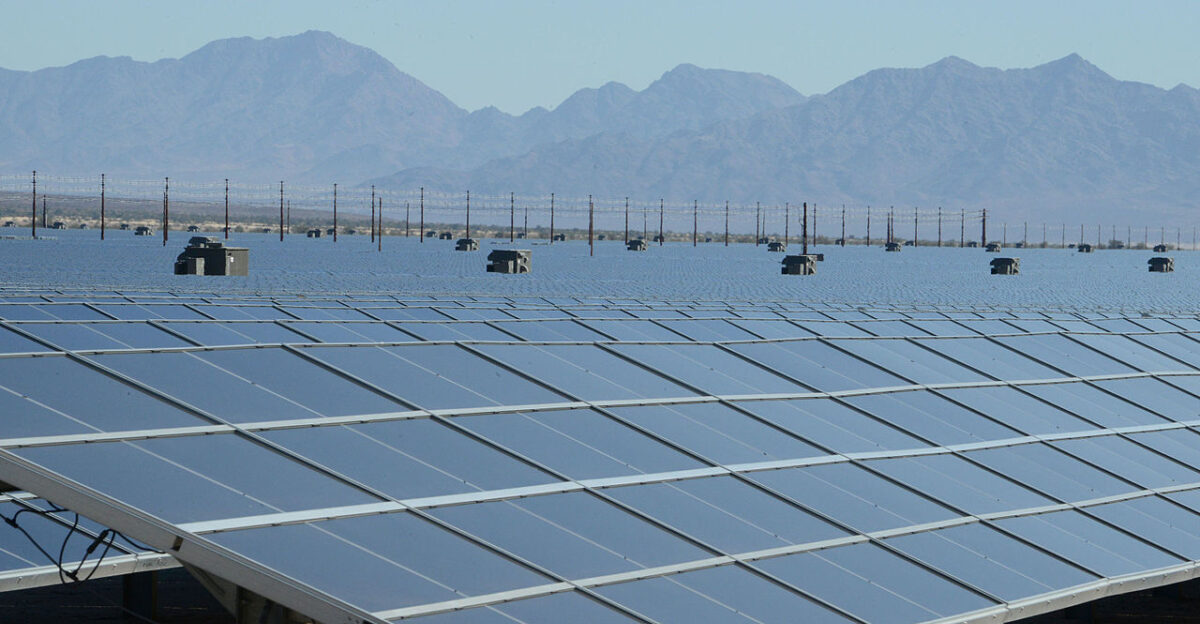
Desert solar farms, like California’s 4,000-acre Desert Sunlight Solar Farm, serve as an example of the size of solar deployment required to reach challenging renewable goals. State and federal clean energy goals are greatly aided by these projects, which produce enough electricity to power hundreds of thousands of homes. Their enormous footprint, however, permanently changes the desert’s topography by turning natural areas into energy zones.
Complexity is further increased by the possible disturbance of indigenous cultural sites and the aesthetic impact on pristine desert vistas. These social and environmental costs must be balanced against the economic advantages, such as lower energy costs and the creation of jobs.
Environmental Difficulties and Issues with Biodiversity
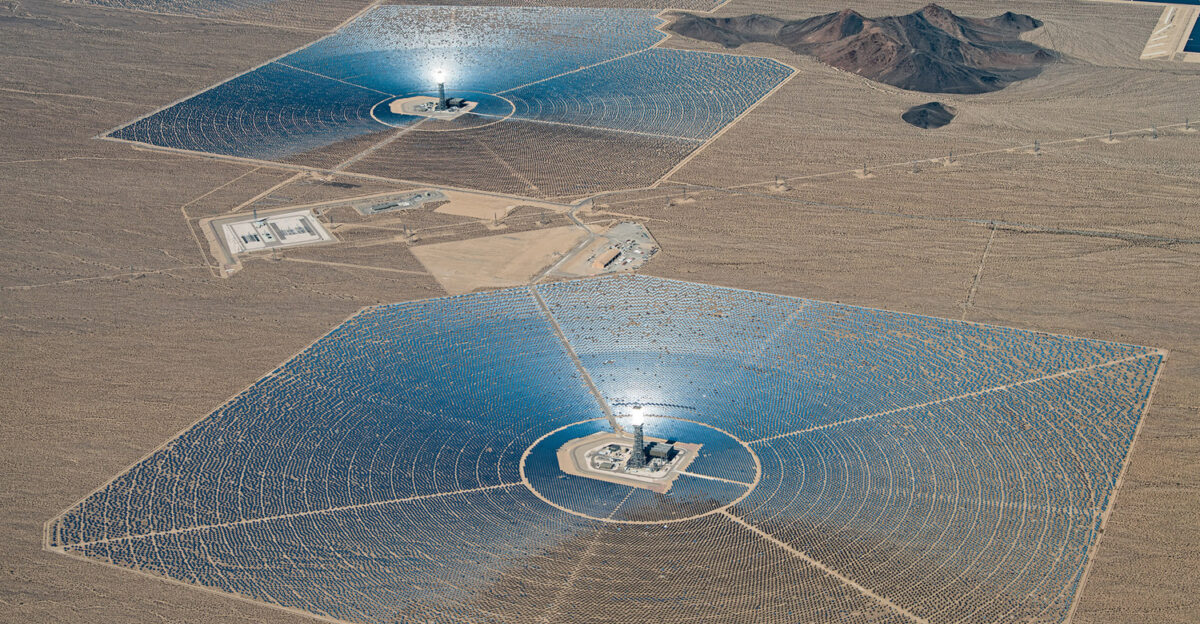
Complex environmental issues are brought up by the growth of solar farms in desert regions. Projects such as the Ivanpah Solar Electric Generating System have come under fire for killing birds due to mirror collisions and the extreme heat of solar-thermal technology. Despite their apparent aridity, desert ecosystems are home to endangered plants and animals.
The difficulty is in creating thorough environmental impact assessments that incorporate ecosystem services and species protection in addition to carbon accounting. Techniques like moving vulnerable species, building artificial habitats, and using technology to keep animals away from dangerous areas are being tested. The combined effects of several solar projects in arid regions may cause habitat fragmentation, which would impact genetic diversity and migration patterns.
Social and Economic Aspects of Solar Projects in the Desert
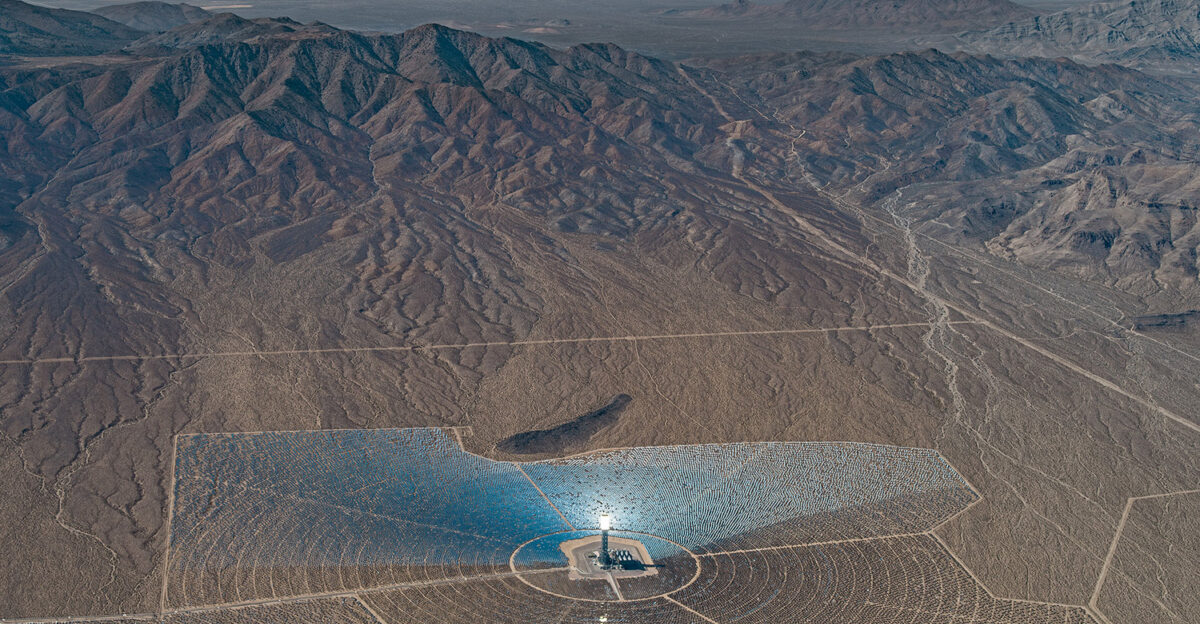
Significant economic benefits, such as the creation of jobs and local revenue, are produced by solar farms in arid regions. One example of how government assistance encourages private investment in renewable infrastructure is the Desert Sunlight project, which is supported by $1.5 billion in federal loan guarantees.
However, as demonstrated in California’s Desert Center, where locals voice concerns about land use and environmental justice, local communities occasionally feel overburdened by the scope and speed of development. Indigenous groups frequently challenge solar developments on their ancestral lands, calling for equitable benefit-sharing and consultation. The distribution of economic benefits can be unequal, with local populations experiencing disruptions while large corporations profit.
Innovations in Technology Promoting Solar Efficiency
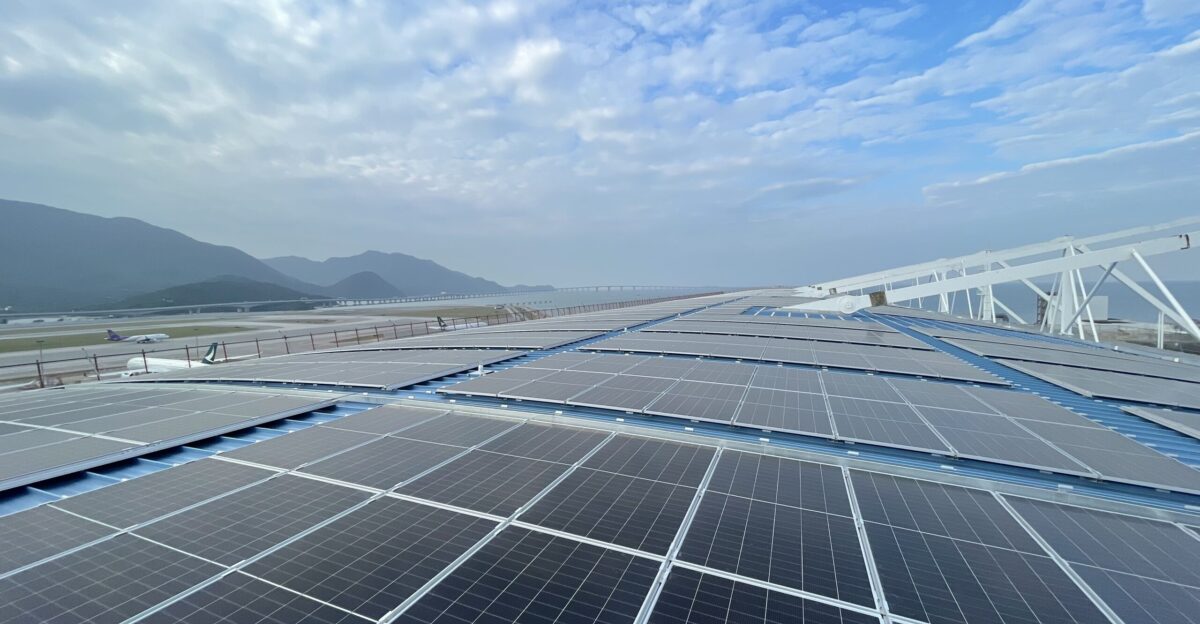
To optimize the advantages of desert solar farms, developments in energy storage and photovoltaic technology are essential. Large-scale battery storage is incorporated into projects like Fox Squirrel Solar, allowing for a power supply that is available around-the-clock in spite of solar intermittency. Solar power can be dispatchable and dependable thanks to innovations like molten salt thermal storage at facilities like Arizona’s Solana Generating Station.
Within the next ten years, desert solar farms could undergo a revolution thanks to emerging technologies like perovskite solar cells, which promise even greater efficiencies and reduced costs. Digital tools that optimize performance and minimize downtime include grid management and AI-driven predictive maintenance. Together, these developments improve solar projects’ financial feasibility and environmental advantages, hastening the shift to low-carbon energy.
Goals for Renewable Energy and Policy Frameworks
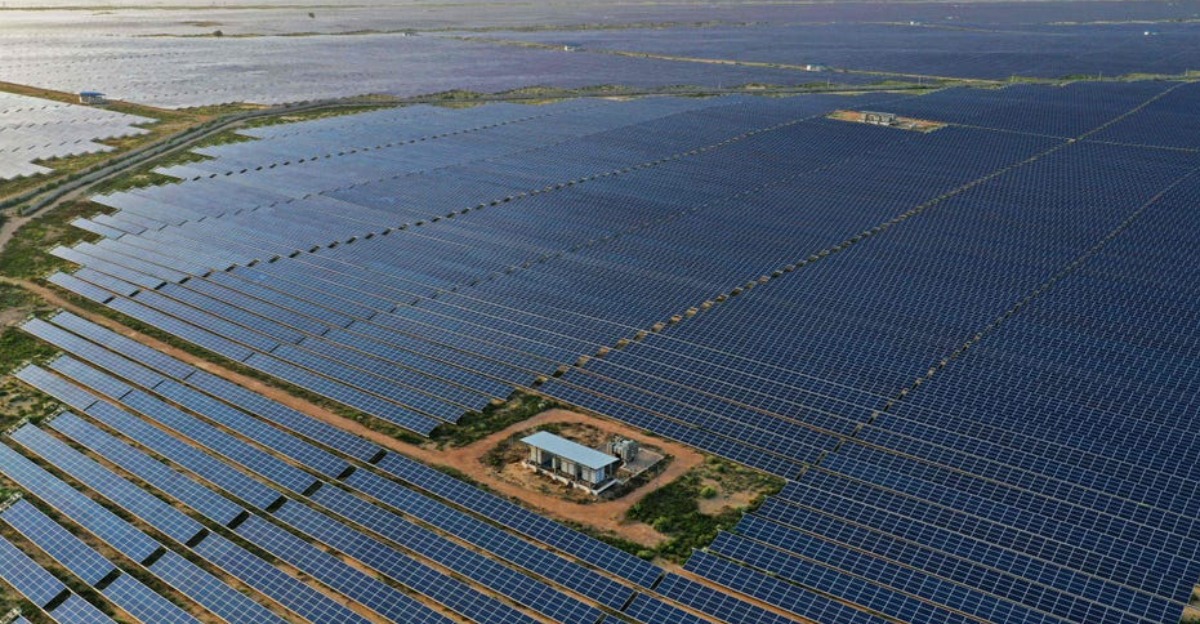
The fast growth of solar in arid areas is fueled by state and federal policies. Political commitments to decarbonization are reflected in Ohio’s aggressive capacity additions and California’s mandate for 50% renewable electricity by 2030. In order to balance energy development with environmental stewardship, the Bureau of Land Management’s Western Solar Plan makes over 31 million acres available for possible solar development across 11 states.
While environmental laws enforce protections, incentives like tax credits, grants, and expedited permitting procedures reduce obstacles for developers. Deployment is occasionally slowed, though, by issues with grid integration and policy volatility. In order to integrate desert solar power into national grids, recent bipartisan infrastructure investments have expanded funding for grid resilience and transmission upgrades. Policies also place a greater emphasis on environmental justice, which calls for a fair distribution of the advantages and disadvantages.
Land Use Debates
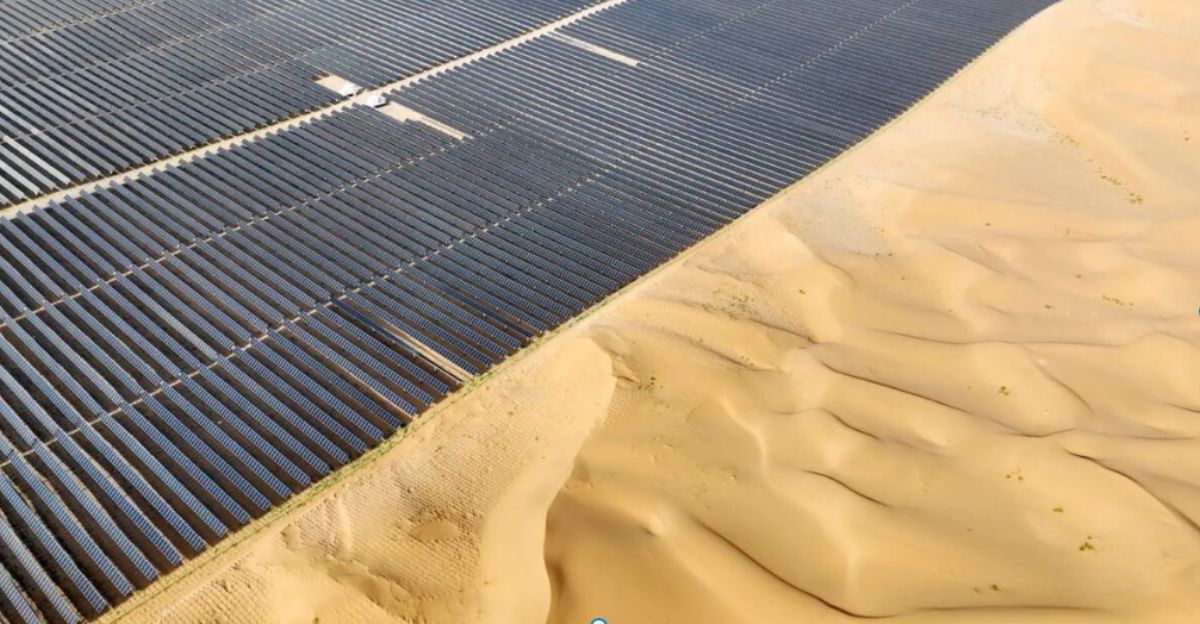
Large-scale solar farms in deserts, according to some critics, constitute an unsustainable land grab that disturbs delicate ecosystems and indigenous lands, despite the obvious climate benefits. They urge more dispersed solar solutions, such as rooftop and community solar, that reduce environmental impact and warn against considering deserts as nothing more than “wastelands” for energy exploitation.
By prioritizing social justice and ecological integrity over merely increasing capacity, this unconventional viewpoint subverts the prevailing narrative. It urges a nuanced strategy that respects cultural heritage, combines solar deployment with landscape conservation, and moves the sector closer to more comprehensive sustainability.
Prospective Patterns and Potential Results

Future second- and third-order effects of the desert solar boom include accelerated grid modernization, the emergence of new desert-based industries such as solar-powered data centers, and changes in regional demographics as infrastructure and jobs are developed. Theoretically, desert solar zones could develop into multipurpose landscapes that combine solar-powered agriculture or conservation tourism with energy production.
One of the emerging trends is the possibility that desert solar farms could facilitate the electrolysis of hydrogen, allowing for the export of green fuels. Developments in floating solar panels on desert reservoirs may maximize energy production and water use. Micro-grid technology innovation may be spurred by desert solar projects, improving energy access in isolated communities.
The need for substantial transmission infrastructure, which can further fragment habitats and raise costs, is another point of contention raised by critics of centralized solar farms.
A Revolution in Land Use and Energy
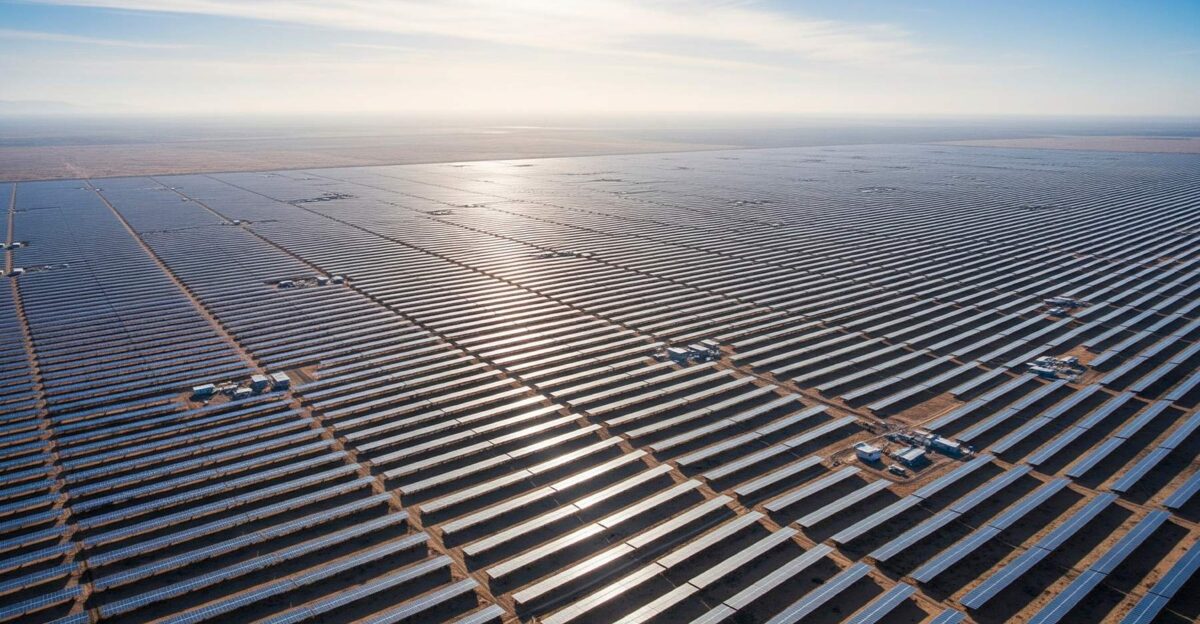
A paradigm shift in energy and land use is exemplified by the 1.4 million solar panels that have been installed in desert regions of the United States. It represents the pressing necessity of switching from fossil fuels to renewable energy sources while addressing the intricate realities of technological advancement, community involvement, and environmental impact. Previously viewed as desolate, deserts are now front-line arenas for climate action and economic renewal, as this project and others like it show.
By demonstrating how large-scale solar can be responsibly incorporated into delicate landscapes, the project acts as a model for global renewable energy strategies. In order to manage trade-offs and promote innovation, it also emphasizes how crucial interdisciplinary cooperation is between scientists, legislators, communities, and businesses.







